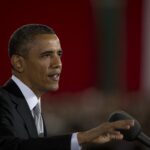
Since more than a decade ago, foreign students and their high out-of-state fees have been buffering the impact of funding cuts to public universities in the United States. Now, President Donald Trump’s “America First” policy and other ticking problems look set to derail this system, education experts say.
Experts told South China Morning Post thanks to the increasing influx of foreign students over the years, especially those from China, US universities have been able to maintain high academic standards while keeping tuition fees for in-state students as low as possible. According to the daily, the number of Chinese students entering the US grew seven-fold from 2008 to 2015.
The Chinese student boom has kept many US public universities afloat… but Trump’s 'America First' stance might… https://t.co/CISPUE5KTo
— IvanZhai (@ivanzhai) April 10, 2017
According to the National Bureau of Economic Research’s Passage to America: University Funding and International Students working paper, the past two decades have seen substantial declines in state support to public sector universities, “driven by contractions in state budgets”.
And when the cuts came, schools faced a conundrum with few options for solution – they could spend less and compromise on standards, make local students pay more or charge higher fees to those coming from abroad.
Research shows schools chose the third option – something Sarah Turner, professor of economics and education at the University of Virginia, calls the one with “the least damage”.
“Nearly every state in the nation has faced this Hobson’s choice (‘take it, or leave it’) and they have all reached the same decision – open doors to out-of-state students in order to keep the doors open for in-state students,” University of California president Janet Napolitano said.
The experts trace the flood of students coming to US to a few factors. For those from China, it started when the Asian superpower opened its doors in 1978 under then-premier Deng Xiaoping and set forth the economic transformation of the country.
The booming middle class it birthed then started looking for a structured university system to escape, among others, the intensely fierce competition in domestic Chinese universities.

Children of China’s ruling class often head to American universities. Source: Reuters.
The ease in getting visas in recent times helped bring more Chinese and Indian students to the US to study too, according to the American Association of Collegiate Registrars and Admissions Officers executive director Michael Reilly.
But Reilly doubts this trend will continue, given Trump’s pledge to put “America first”. Countries such as Australia and Canada, which also attract many overseas students, would welcome more, he says.
Coupled with other problems international students face such as isolation and racism – issues universities have not satisfactorily solved to date – Jenny Lee, associate professor at the Centre for the Study of Higher Education at University of Arizona, foresees the spike in foreign student numbers may not last.
Citing “neo-racism” (the idea that certain cultures are superior to others) and outright racism (being told to “go back to your own country”), Lee spoke how these troubles, which are not unique to the US, put international students, who hold fewer rights, in vulnerable situations.
AMERICA FIRST!
— Donald J. Trump (@realDonaldTrump) June 14, 2016
“I still have not come across a case where a white European, Australian, American has been treated negatively or worse than a student from Africa, Latin America, Asia,”.
She calls for a “more serious inquiry and investigation” into how foreign students can be made more welcome.
“I think that’s a very important question that needs to be asked.”
Liked this? Then you’ll love these…







